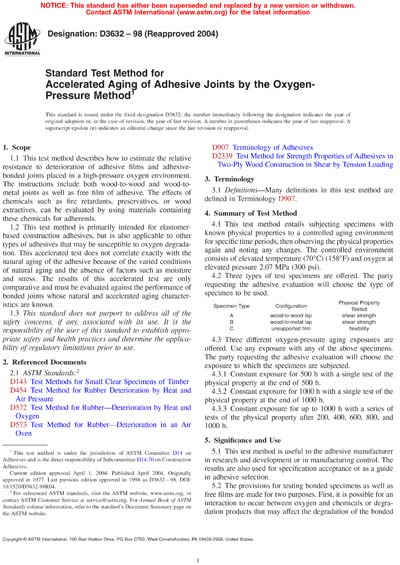Historical
ASTM D3632-98(2004)
Standard Test Method for Accelerated Aging of Adhesive Joints by the Oxygen-Pressure Method
1.1 This test method describes how to estimate the relative resistance to deterioration of adhesive films and adhesive-bonded joints placed in a high-pressure oxygen environment. The instructions include both wood-to-wood and wood-to-metal joints as well as free film of adhesive. The effects of chemicals such as fire retardants, preservatives, or wood extractives, can be evaluated by using materials containing these chemicals for adherends.
1.2 This test method is primarily intended for elastomer-based construction adhesives, but is also applicable to other types of adhesives that may be susceptible to oxygen degradation. This accelerated test does not correlate exactly with the natural aging of the adhesive because of the varied conditions of natural aging and the absence of factors such as moisture and stress. The results of this accelerated test are only comparative and must be evaluated against the performance of bonded joints whose natural and accelerated aging characteristics are known.
1.3 This standard does not purport to address all of the safety concerns, if any, associated with its use. It is the responsibility of the user of this standard to establish appropriate safety and health practices and determine the applicability of regulatory limitations prior to use.
ASTM International [astm]

